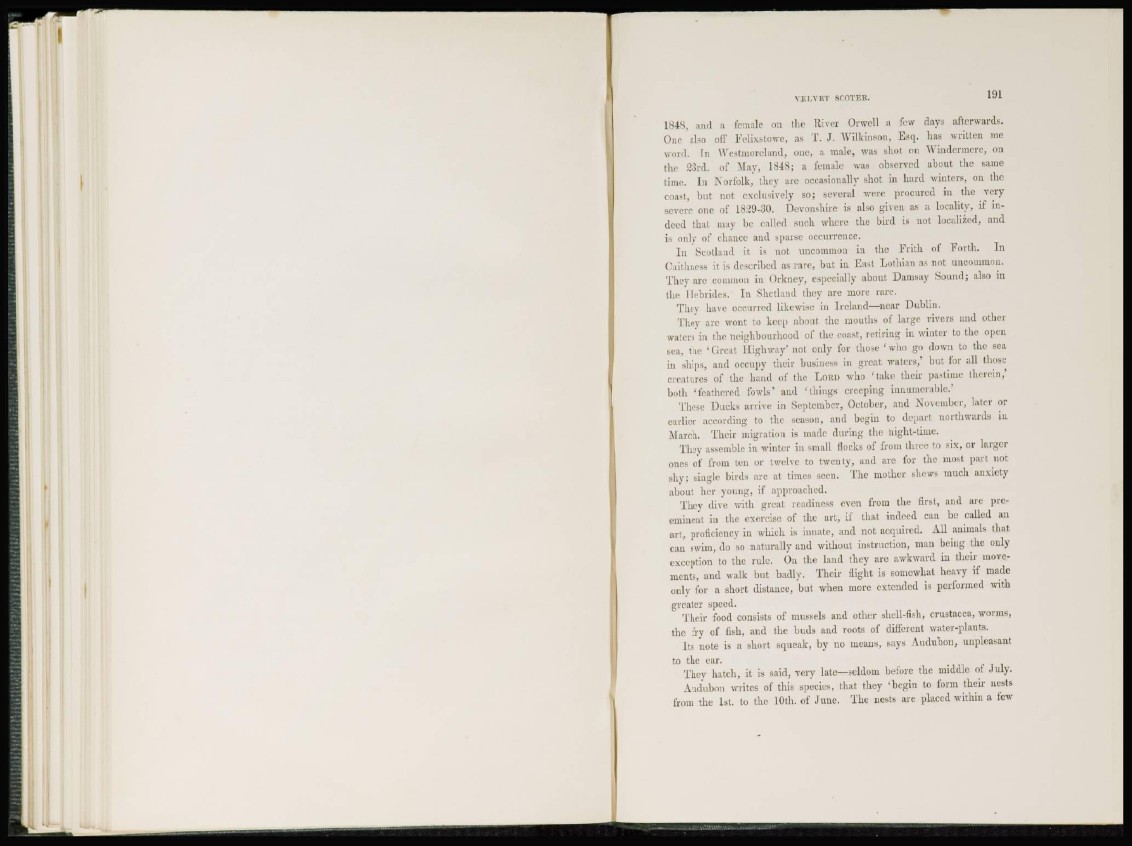
VELVET SCOTER. 19]
184S, and a female on the River Orwell a few days afterwards.
One also off Felixstowe, as T. J. Wilkinson, Esq. lias written me
word. In Westmoreland, one, a male, was shot on Windermere, on
the SSrd. of May, 1848; a female was observed about the same
time. In Norfolk, they are occasionally shot in hard winters, on the
coast, but not exclusively so; several were procured in the very
severe one of 1889-30. Devonshire is also given as a localitv, if indeed
thai may he called such where the bird is not localized, and
is only of chance and sparse occurrence.
I n Scotland it is not uncommon in the Frith of Forth. In
Caithness it is described as rare, but in East Lothian as not uncommon.
They are common in Orkney, especially about Damsay Sound; also in
the Hebrides. In Shetland they are more rare.
They have occurred likewise in Ireland—near Dublin.
They are wont to keep about the mouths of large rivers and other
waters in the neighbourhood of the coast, retiring in winter to the open
sea, the 'Great Highway' not only for those 'who go down to the sea
in ships, and occupy their business in great waters,' but for all those
creatures of the hand of the LORD who 'take their pastime therein,'
both 1 feathered fowls' and ' things creeping innumerable.'
These Ducks arrive in September, October, and November, later or
earlier according to the season, and begin to depart northwards in
March. Their migration is made during the night-time.
They assemble in winter in small flocks of from three to six, or larger
ones of from ten or twelve to twenty, and are for the most part not
shy; single birds arc at times seen. The mother shews much anxiety
about her young, if approached.
They dive with great readiness even from the first, and are preeminent
in the exercise of the art, if that indeed can be called an
art, proficiency in which is innate, and not acquired. All animals that,
can swim, do so naturally and without instruction, man being the only
exception to the rule. On the land they are awkward in their movements,
and walk but badly. Their flight is somewhat heavy if made
only for a short distance, but when more extended is performed with
greater speed.
Their food consists of mussels and other shell-fish, Crustacea, worms,
the fry of fish, and the buds and roots of different water-plants.
Its note is a short squeak, by no means, says Audubon, unpleasant
to the ear.
They hatch, it is said, very late—seldom before the middle of July.
Audubon writes of this species, that they 'begin to form their nests
from the 1st. to the 10th. of June. The nests are placed within a few